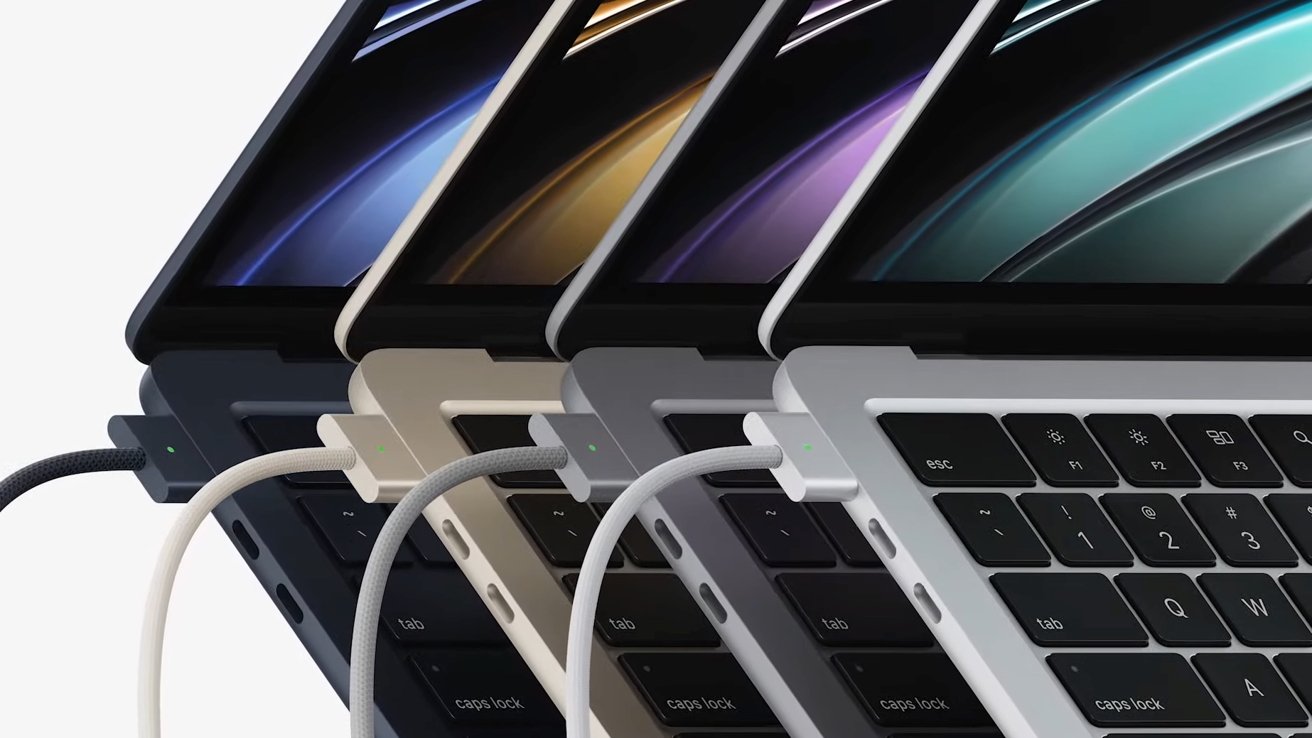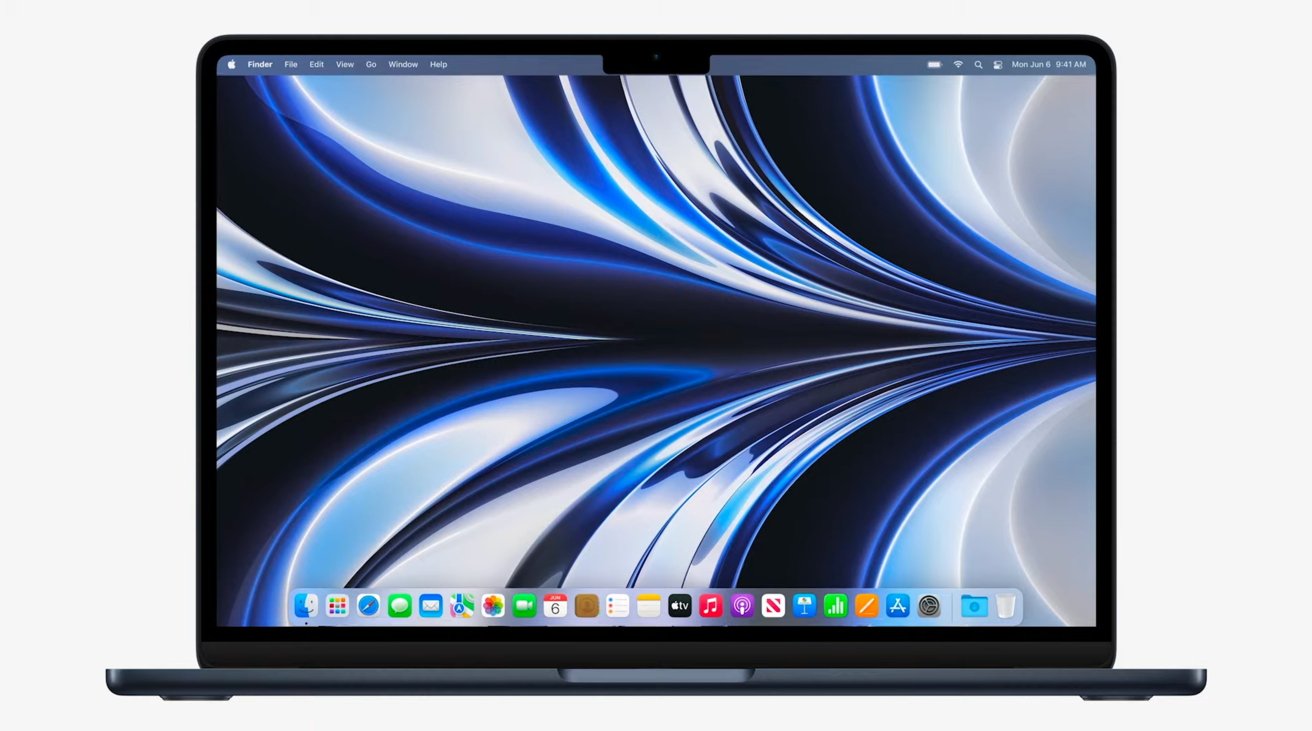
Apple has revamped its entry-level MacBook Air, boosting its performance with a new M2 processor, losing the famous tapered edge, and adding the notch from the MacBook Pro.
At its WWDC 2022 keynote, Apple announced the second Apple Silicon version of the MacBook Air. Apple's most popular notebook was among the first models released during the company's two-year transition from Intel processors, but its external design was physically the same as its predecessor.
That external design was first introduced in 2018, and marked the third significant iteration of the MacBook Air. Now there's a fourth version, with a brand-new design that retains the slimness, but loses the familiar tapered front edge. Even so, it's still 11mm thin.
The lack of a tapered edge does mean that the typing angle is no longer better than it is on the MacBook Pro. However, it should also mean that the new MacBook Air has sufficient ventilation that it can run at its top performance speed, for longer.
The port selection has been updated, with two Thunderbolt ports joined by a headphone jack with high-impedance headphone support, and MagSafe for charging. Speaking of ports, there are two USB-C ports in the new 35W power adapter.
The power changes also include a quick-charge capability that can go to 80 percent in a mere 20 minutes. As for battery life, Apple claims up to 18 hours of Apple TV app movie playback, or 15 hours of wireless web access.

The Liquid Retina Display is now a 13.6-inch panel, with support for a billion colors, True Tone, and capable of up to 500 nits of brightness. LED-backlit, it has a resolution of 2,560 by 1,664, and a pixel density of 224ppi.
On the top is a 1080p FaceTime HD camera, complete with twice the low-light performance of the previous Air.
Going for smaller bezels means there is the addition of the notch that was introduced with the 14-inch MacBook Pro, and revised 16-inch MacBook Pro.
The new M2 processor means that the revised MacBook Air fits in between the old model, and the current M1 Pro and M1 Max MacBook Pro. As well as a speed improvement, though, the M2 also addresses how the previous MacBook Air was limited to supporting only one external monitor.
Customers will be able to choose between an M2 with an eight-core CPU and 8-core GPU, or a 10-core GPU version. The 8-core GPU option has a 30W USB-C power adapter, while the 35W will be included with the 10-core GPU model.
Despite the chip change, a holdover limitation from the M1 model is still present. Aside from the built-in display, the MacBook Air still only supports one external 6K display at up to 60Hz.
The Unified Memory capacity starts from 8GB, with 16GB and 24GB options available. Storage starts from 256GB on the 8-core GPU variant, 512GB on the 10-core, with 1TB and 2TB options also on hand.
Wireless connectivity includes Wi-Fi 6 support and Bluetooth 5.0. Audio consists of a four-speaker sound system with wide stereo sound and Spatial Audio support, along with a three-mic array with directional beamforming.
Overall, there are more ports than on the previous model. And just as with the 24-inch iMac, the new MacBook Air now comes in a range of colors: Silver, Space Gray, Starlight, and Midnight.
Apple will be releasing the M2 MacBook Air in July, starting from $1,199. The M1-based version will stick around and will start from $999.